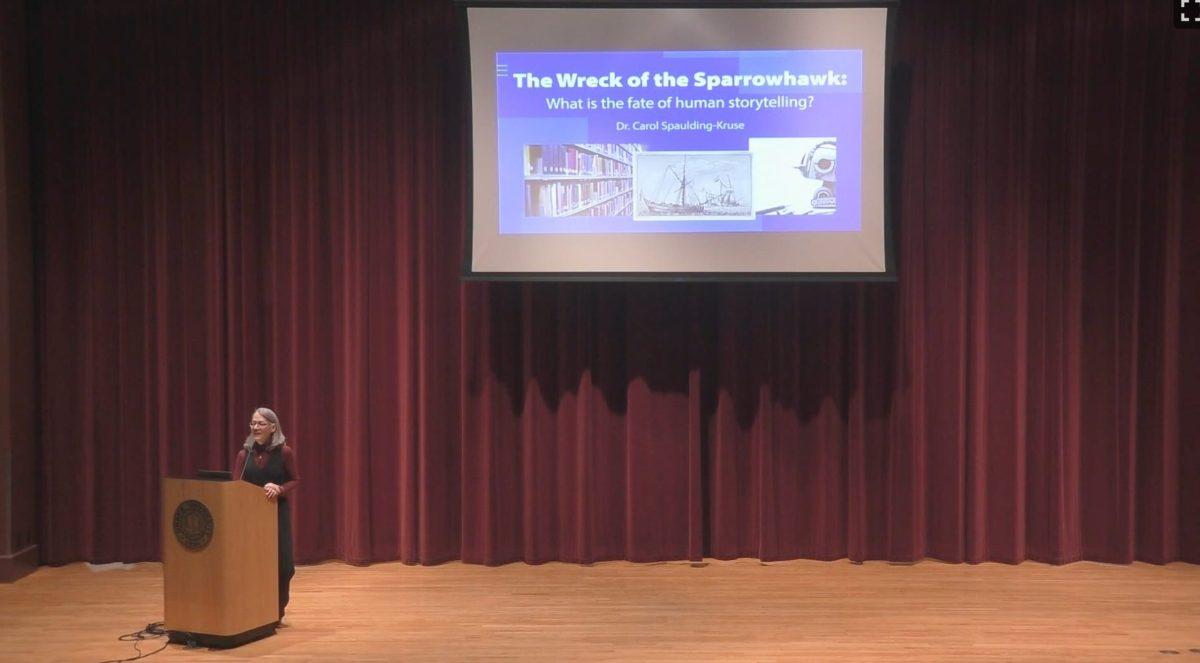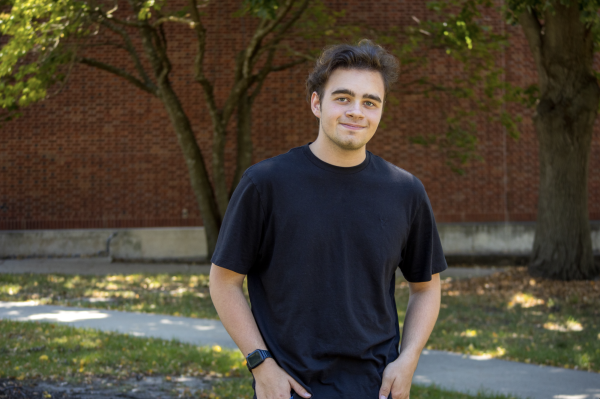As artificial intelligence progresses, writers have grown exponentially concerned with the fate of human storytelling. This was the topic of the 39th annual Stalnaker Lecture given by professor Carol Spaulding-Kruse.
The Stalnaker Lecture was established to honor the memory of former dean of the College of Arts and Sciences, then College of Liberal Arts, Luther W. Stalnaker. Starting in 1985, the Stalnaker Lectures have had a myriad of speakers from Drake’s faculty speak. Spaulding-Kruse was selected to be this year’s speaker. This year’s lecture title was “The Wreck of the Sparrowhawk: What is the Fate of Human Storytelling?”
Spaulding-Kruse teaches writing and American literature as a professor of English at Drake University. Spaulding-Kruse has worked at Drake since 1996 and is a published author, her latest work being “Waiting for Mr. Kim and Other Stories.” Spaulding-Kruse used the story of the Sparrowhawk shipwreck as an analogy for being forced to adapt to the world around us changing.
In the 17th century, the Sparrowhawk shipwrecked off the southern coast of Jeju Island, South Korea, with the crew having no way to communicate or any idea of the native culture. They slowly learned the customs and language of Korea, adapting to their unforeseen circumstances. Spaulding-Kruse related this story to how narrative will assimilate to the presence of AI.
Spaulding-Kruse described how, as generative AI gets better, the bigger the impact it will have on the future of human narrative.
“It’s unavoidable. What can be automated will be automated and what can be monetized will be monetized. It will creep into every nook and cranny, and I don’t think that there’s a lot we can do about that,” Spaulding-Kruse said. “Will that stop people from being creative? I doubt it. I think we’ll eventually learn how to use AI to be creative, and I do wonder about what’s lost when we do that. But I believe in creativity more than in the power of AI.”
From Adobe adding generative fill into Photoshop to ChatGPT being used to fact-check and edit essays, generative AI has made itself a widely used tool in multiple facets of industry and education.
“I’ve watched with horror and fascination as AI increasingly dominated headlines. At a winter conference of writing teachers, it was standing room only in sessions featuring ChatGPT,” Spulding-Kruse said. “By spring term, I decided to adopt ChatGPT as a new exploratory in my writing seminar and was grateful to attend several valuable sessions offered by my colleagues right here at Drake. Many educators have spent the past summer adapting their courses and policies to fit the new normal. Students have been adjusting to their new reality not only in the classroom but as they consider their professional futures.”
As AI adoption became more widespread, there has been a lot more implementation of it into the curricula of multiple areas of study. In some Drake classes, professors have syllabi banning unwarranted AI use, and in others, students are taught how to use it.
“I didn’t touch AI up until this year. What I’ve noticed that’s interesting is that on the website that my professor uses, there is a tool — an AI chatbot. You can ask it how to solve a calculus problem,” sophomore Torin Johnson said. “It will show me how it got the answer. Is it always, right? No, I’ve had some mistakes while using it, but it’s interesting having this tool as opposed to having to pull up a lecture.”
As AI becomes more integrated into the tools already being used in daily life, the questions posed by this year’s Stalnaker Lecture shine through more than just human storytelling, but to all aspects of software.
“Suddenly and irrevocably, AI has exploited this unique moment with a threat to the narrative class,” Spaulding-Kruse said. “Can writing itself seek our adaptation just as some of the Sparrowhawk crew sought theirs? What will the robots know about our stories in four years?”








